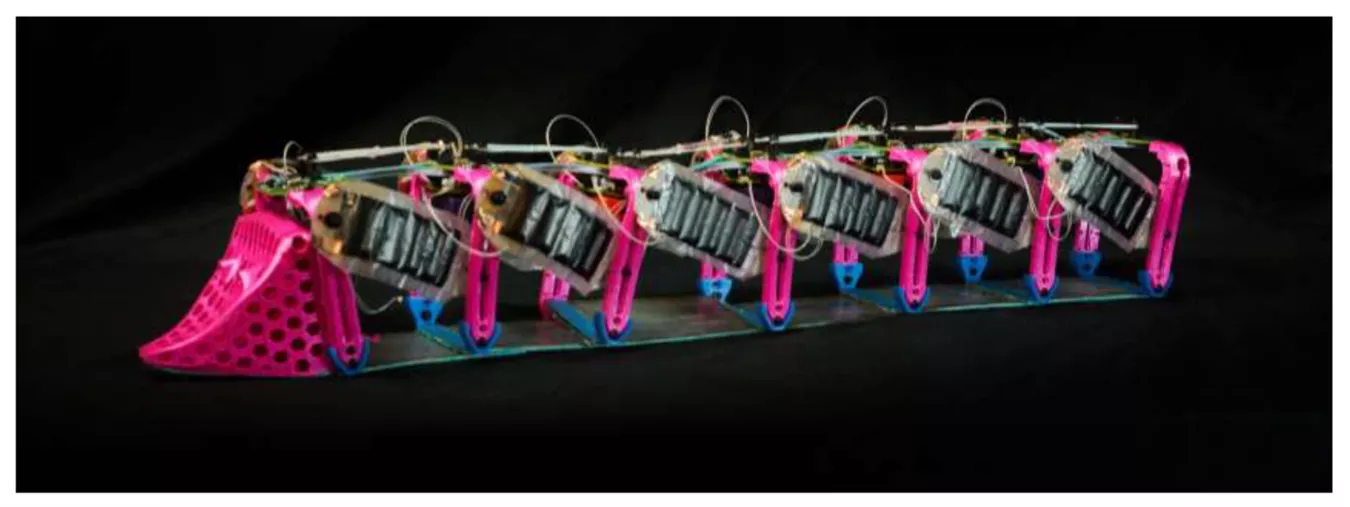
Autonomous human-like soft robots promise new applications in fields including healthcare, education, and space and ocean exploration.
Developing robots with human-like muscles that produce autonomous movement is not possible using traditional rigid, high-voltage electronics. However, recent research funded by FlexTech, a SEMI Technology community, shows promise in incorporating microcircuits to do just that by directly controlling and operating HASEL actuators. The innovation could guide intelligent, goal-oriented robots in areas such as healthcare, education, and space and ocean exploration, all fields that could be enhanced with soft continuum robots.
 Toward that end, hydraulically amplified self-healing electrostatic actuators, or HASELs, have emerged as a new class of actuator that offer high-frequency response and continuum actuation at low cost for soft robotics. HASEL actuators are expected to become widespread – yet challenges in switching the high voltages required to drive them are barriers to their broad application.
Toward that end, hydraulically amplified self-healing electrostatic actuators, or HASELs, have emerged as a new class of actuator that offer high-frequency response and continuum actuation at low cost for soft robotics. HASEL actuators are expected to become widespread – yet challenges in switching the high voltages required to drive them are barriers to their broad application.
To address this challenge, Rob MacCurdy, Assistant Professor of Mechanical Engineering and Computer Science, and Greg Whiting, Associate Professor of Mechanical Engineering, both at the University of Colorado Boulder, recently demonstrated small, low-power, switches that were integrated into a HASEL actuator. They recently completed their R&D project, titled Untethered soft robot enabled by flexible HV drivers and electro-hydraulic continuum actuators, under FlexTech contract number FT19-20-192.
Untethered Continuum Robot

Snake robot designed utilizing flexible, high voltage drivers and HASEL actuators, developed by University of Colorado and PARC.
“As we fabricated these new switches, we demonstrated their efficacy by developing a continuum HASEL-powered, untethered robot, inspired by inchworms,” MacCurdy said. “This is the first robot of its kind demonstrating untethered actuation using HASELs. In collaboration with the Palo Alto Research Center (PARC), the team also developed microscale high-voltage switches implemented in a CMOS process and produced small quantities of these switches for testing.”
Heidi Hoffman is senior director of Technology Communities Marketing at SEMI.